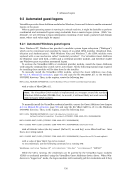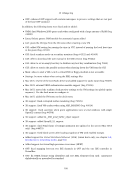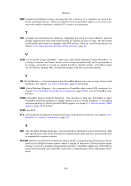8 VBoxManage variant Allows to choose a file format variant for the output file. It is a comma-separated list of variant flags. Not all combinations are supported, and specifying inconsistent flags will result in an error message. Note: For compatibility with earlier versions of VirtualBox, the “createvdi” command is also supported and mapped internally to the “createhd” command. 8.21 VBoxManage modifyhd With the modifyhd command, you can change the characteristics of a disk image after it has been created: VBoxManage modifyhd uuid|filename [--type normal|writethrough|immutable|shareable| readonly|multiattach] [--autoreset on|off] [--compact] [--resize megabytes|--resizebyte bytes] Note: Despite the “hd” in the subcommand name, the command works with all disk images, not only hard disks. For compatibility with earlier versions of VirtualBox, the “modifyvdi” command is also supported and mapped internally to the “modifyhd” com- mand. The following options are available: • With the --type argument, you can change the type of an existing image between the normal, immutable, write-through and other modes see chapter 5.4, Special image write modes, page 76 for details. • For immutable (differencing) hard disks only, the --autoreset on|off option determines whether the disk is automatically reset on every VM startup (again, see chapter 5.4, Special image write modes, page 76). The default is “on”. • With the --compact option, can be used to compact disk images, i.e. remove blocks that only contains zeroes. This will shrink a dynamically expanding image again it will re- duce the physical size of the image without affecting the logical size of the virtual disk. Compaction works both for base images and for diff images created as part of a snapshot. For this operation to be effective, it is required that free space in the guest system first be zeroed out using a suitable software tool. For Windows guests, you can use the sdelete tool provided by Microsoft. Execute sdelete -c in the guest to zero the free disk space before compressing the virtual disk image. Please note that compacting is currently only available for VDI images. A similar effect can be achieved by zeroing out free blocks and then cloning the disk to any other dynamically expanding format. You can use this workaround until compacting is also supported for disk formats other than VDI. • The –resize option allows you to expand the capacity of an existing image this increases the logical size of a virtual disk without affecting the physical size much.3 This currently works only for the VDI and VHD formats, and only for the dynamically expanding variants. For example, if you originally created a 10G disk which is now full, you can use the –resize command to add more space to the virtual disk without having to create a new image and copy all data from within a virtual machine. 3Image resizing was added with VirtualBox 4.0. 123
Purchased from Demo (abedemo.tizrapublisher.com) for the exclusive use of unknown. © 2025 Demo. Please report unauthorized use to pirate@tizra.com













































































































































































































































































